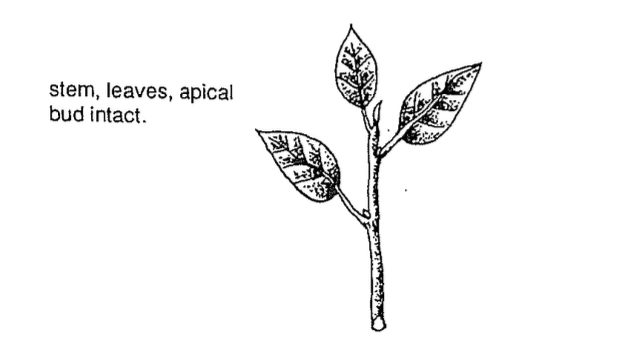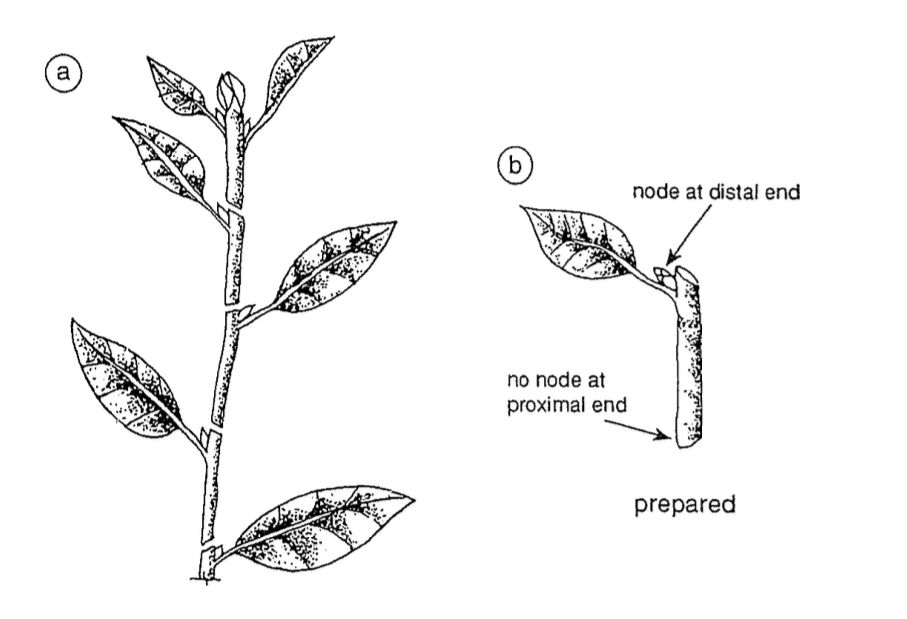Stem Cuttings
- Shanti Bants
- Jan 5
- 3 min read
Updated: Jan 6
Types
Stem cuttings can be classified according to:
the technique used
the age and state of wood.
According to technique
Potentially there are three types of cuttings which can be prepared:
tip cutting (for example, soft-tip)
nodal cutting
internodal cutting (a variation of which is the leaf bud cutting).
Tip cuttings
Only the top of the stem is used and the terminal bud is left intact. Depending on the species, a tip cutting can be between 5-150 mm long.

With many species it is possible to use more than the tip of the growth to prepare a cutting; the tip may in fact be removed for one of the following reasons:
because it is susceptible to disease, infection or wilting;
because it contains a flower;
in order to encourage early side-shoot development following rooting;
to utilise as much of the plant material as possible.
Nodal cuttings
These are cuttings made from the material directly behind, and not including, the growing point.
A nodal cutting has a node at the distal end and a node at the proximal end. There may be other nodes between these: this is determined by the amount of material available and the size of the internodal length.
Genera include Cissus and Hydrangea, but also many ornamental plants can be propagated by this method.

Internodal cuttings
As the name implies, these cuttings are prepared using a node (with healthy bud) at the distal end of the material but no node at the base; in other words there is only one node present-at the top of the cutting (see Figure 3).
Internodal cutting are used in the following circumstances:
where the plant is so easy to root that it makes no difference whether or not it is cut at a node leg Hydrangea);
for cuttings with extremely short internodes and numerous leaves, where it is not practical to locate a node;
where the internodal length is very long and it would be very hard to stabilise in the media if the cutting was nodal (eg Clematis spp.).

Potentially, you can prepare several cuttings from one stem length. This will depend upon the species, because many species only respond favourably (ie with high- percentage strike rates) to tip cuttings.

If you prepared several cuttings from each stem length of a species (as seen in
Figure 4), all the tip cuttings would be planted together, separately from all the first group of nodal cuttings, which themselves would be planted separately from the second group of nodal cuttings (2). This is because the cutting types will form roots at different times and will need to be potted and handled separately.
According to the age and state of wood
There are essentially three types of cuttings based on the stage of stem-growth development
sort-tip (or softwood) cuttings
semi-hardwood (or semi-ripe) cuttings
hardwood cuttings, including deciduous hardwood and evergreen hardwood.
These three types (based on age and state of wood) wil be described in the next three topics.
Characteristics of stem cuttings
Each cutting must have at least one bud. This bud is not only necessary for subsequent shoot and leaf growth, but also for the production of auxins vital to the initiation of adventitious roots at the base of the cutting. The bud can be either apical or axillary.
Each cutting must have a section of stem present. This serves to provide food reserves and also the necessary auxins. While some species will respond to leaf bud cuttings, most species need a short stem section in order to be successful.
Depending upon the type of cutting, leaves are normally present to provide a photosynthetic surface for the production of food (as an energy source).






Comments